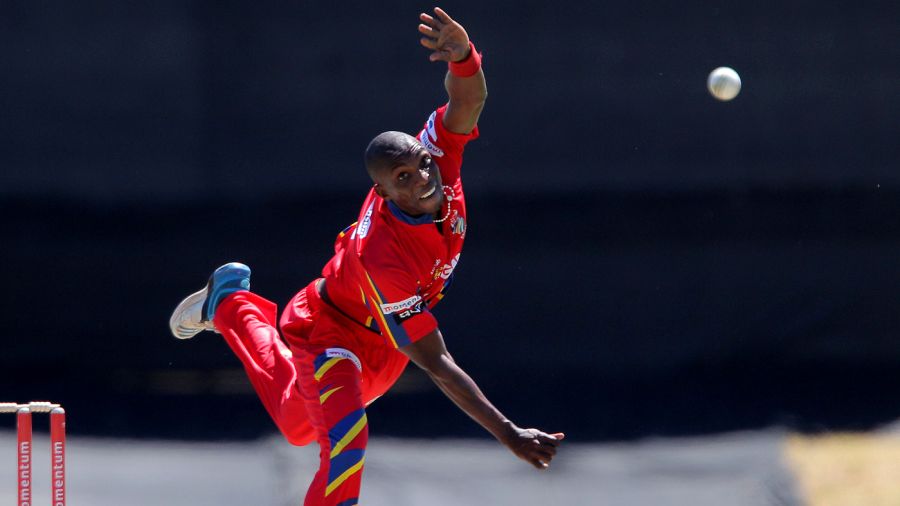Johan van Heerden on concerns raised by Eddie Leie over living conditions of younger academy players, all of whom were black
The Free State Cricket Union has admitted to providing sub-standard accommodation for academy players, all of whom were black, as recently as 2019, but denied any racial discrimination in the province’s cricketing structures. Speaking at the resumption of Cricket South Africa’s Social Justice and Nation-Building (SJN) hearings, Free State CEO Johan van Heerden expressed regret with the provisions his union made for up-and-coming players in their system but said the facilities in Bloemfontein remain exemplary for anyone hoping to further their cricketing career.
Leie’s affidavit, submitted to the SJN earlier in the year, contained images of the Mangaung Oval’s old gymnasium, which had been converted into a residence for academy players, at the request of the academy coach. Although not displayed on the SJN’s YouTube channel, the pictures showed basic accommodation which Sandile July – one of ombudsman Dumisa Ntsebeza’s assistants – described as “not even a star, never mind five”, and which van Heerden conceded the union was embarrassed about. “If you look at the photos and if you ask me if I would advertise accommodation like that, absolutely I wouldn’t,” van Heerden said.
“When Dillon requested that, we used the old gym at the downstairs western pavilion and revamped it into accommodation. We developed it into three bedrooms with partitioning walls. It was fairly private but not five-star accommodation. It was not as permanent accommodation but solely for a short term.
“Obviously the accommodation was not five-star, but they had TVs, they had brand-new beds, it was very neat at the time, when they moved in. Part of the arrangement was that they would have to upkeep it themselves, not upkeep but clean it, as it wouldn’t have been a serviced area. It’s not something I would pride ourselves on. After the kids moved out, we have never used that accommodation any further. Did we ever think it was the best solution? Most probably not. It was made into living accommodation – not that we want to pride ourselves on it.”
Asked if all of the players using the accommodation were black, van Heerden said: “I don’t think there was a white player in there.”
In hindsight, van Heerden said it was “a mistake from Free State’s side… but it was never meant in a bad way. It was meant to see how we could get kids to the next level.”
When pushed on whether he could understand Leie’s dismay at seeing young black players living in such conditions, van Heerden agreed that Leie had cause to be distressed, albeit that he lived in better accommodation. “If I was a player, I would have felt that way too,” van Heerden said. “Eddie didn’t live there. He had a flat that was rented by the franchise. It wasn’t at the stadium. He was a professional, earning quite a lot of money and he would have been able to pay for his accommodation.”
Leie moved to the Free State from Gauteng and also claimed to be unhappy with the way his career went in Bloemfontein, where he hoped he would be able to push for a more permanent place in the national side. According to van Heerden, Bloemfontein remains a place where cricketers, and especially black cricketers, can advance themselves. “We’ve had so many black players coming through who enjoy it, and have improved their cricket to the extent that they can play for the national team. We have a team set-up that I believe is culturally the best in South Africa,” van Heerden said. “I believe that in Bloemfontein the social life is different to any other province or city so if you love to be at the sea, you are going to find it difficult but our facilities are fantastic. The nets are good. If your purpose is to come here and get yourself into the team, this is the place to make it happen.”
van Heerden also emphasised that the team culture is healthy. “It’s a family team set-up. We don’t have the bright lights or the sea. It’s a small community, a family-orientated, small set-up with strong disciplines on the field and in fitness. It’s more difficult for younger kids to grow up in Bloemfontein than those in Durban or Johannesburg. There’s not many attractions, but the team will do things like have a braai together once a month. We are quite a happy family.”
Firdose Moonda is ESPNcricinfo’s South Africa correspondent
